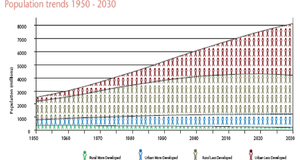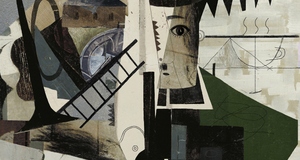An Ethnography of Water Birth and its Representations on YouTubeAnita Harris from the Centre for Critical and Cultural Studies at the University of Queensland in Australia focuses on young women and the ways they use internet technologies for social and political activism. Harris examines the ways that women create and participate in online DIY cultures and how they connect with each other via participation with social networking websites. Harris states that these activities serve to construct new communities, open debates on social and political issues, and develop new public selves. Harris explains that women are typically under-represented in formal politics and that it is worthwhile and important to pay attention to the informal grassroots type activism women engage in on a daily basis through their use of internet technology (Harris 2008). All but one of my participants claim to have had the explicit intention to educate, empower, and inspire women by posting their live birth videos on YouTube.com, the other, 26 year old first time mother Kimberly from Connecticut, had mainly intended her video to be only viewed by family but was surprised to find how interesting and useful other people who viewed her video found it to be for them. The majority of the parents I have interviewed that posted their water birth videos on YouTube.com represent a group that engages in online DIY culture, social networking, video sharing, blogging, message boards, online chatting for the purposes of raising awareness about the social issue of childbirth. These mothers may have considerable difficulty finding a physical public space as a platform for discourse on issues that concern them. Their utilization of online unregulated public spaces satisfies their need to create public discourse over this social issue. The parents in my study have unique passion and enthusiasm for water birth as a birth practice and express a desire to teach other women about the benefits of water birth they have experienced directly. Navigating Local Birth OptionsDue to the diverse geographic living environments of my interviewees, each of them had a unique decision making process in terms of their choice of birth location, choice of attendants, and choice of pain management techniques. Due to the clear dominance of medicalized birth in developed countries all of my participants had the default option to birth in a hospital with obstetrical care, while most had various financial or accessibility limitations to giving birth in a birthing center or at home with a midwife. Eight of the sixteen interviewees expressed a clear desire to avoid the hospital for the birth experience they showed on YouTube.com and the reason they gave was due to a previous negative birth experience in a hospital. With first time mothers the theme emerged that they did not know they had any other option besides birthing in the hospital for their first child, but after having a negative hospital birth experience they actively sought out different birth options.Interviewees within the United States expressed greater difficulty in securing midwives for their birth than interviewees outside of the United States. Elizabeth, a 31 year old mother of two from the United Kingdom had both of her children at home and two midwives were provided to her through the National Health Services. Similarly Nyree, a 37 year old mother of three from New Zealand states: "Midwives here in New Zealand are free. You don't have to pay for a midwife. They are in the yellow pages and that is whether you want to have a hospital birth or a home birth. You have them for six weeks after your birth for free as well. So everybody just goes with a midwife." Amanda, a 31 year old mother of three from Canada explains that maternity care with doctors and hospital births are free through the government. She adds that in some areas of Canada midwives are also financially covered but not in her specific location. Seeing as the local midwives cost approximately $2,500 for their services in her area of Canada she stated that for her first birth she chose not to pay a midwife and instead had a birth free of any out of pocket expense in the hospital. Following an unsatisfying first birth experience in the hospital she chose to pay the $2,500 for her second birth in order to have her child at home. She felt this was the best option for her so as to avoid another incident of having her membranes ruptured artificially, being augmented with pitocin, or being pressured to birth in the lithotomic position. She expressed a general dissatisfaction with the environment of interventions in the hospital. Amber, a 23 year old mother of two from New York expresses difficulty in finding a midwife to attend a homebirth for her first birth. She says the one midwife local to her was not practicing at the time of her first child’s birth. She had a hospital birth for her first child and was left unsatisfied with the experience mainly due to her labor being artificially induced. She felt relieved to find that the local midwife was practicing when she was preparing for the birth of her second child. She tells me that if the midwife had not been practicing then she intended to have an unassisted homebirth with her second child in order to avoid another unsatisfying hospital birth experience. She intended to birth unassisted, rather than repeat a hospital birth, despite the fact that she mentions unassisted birth as being illegal in her local area. Three of my other interviewees from the United States also chose to birth at home unassisted by birth professionals following previous unsatisfying hospital birth experiences and/or in depth self directed research on the topic of birth. Authoritative KnowledgeAuthoritative knowledge in relation to childbirth is defined by Jordan as the knowledge that counts when it comes to decision making. Jordan says that specific belief systems and bodies of knowledge that exist can gain greater legitimacy and devalue others if they happen to explain the ways of the world better, if they are associated with a strong base of power, or both (Jordan 1993: 154). The participants in my study emphasize putting high decision making value into experiential knowledge and knowledge acquired through interactions with people they could relate to personally, with specific attention paid to other women they knew of in their social networks who had told them or shown them about giving birth a certain way. Media influences left powerful impressions on my interviewees. Marisol, a 23 year old Hispanic first time mother from Illinois explains to me that her observations of her mother’s occupation carried significant childbirth decision making weight with her. When I ask her what main factors played into her decision to give birth at home she replies saying: "Mainly, my mother. My mother happens to be an OB/GYN and growing up in that environment where left and right, woman after woman, would come to my mom’s practice and receive intervention after intervention. Moms would hit the 37 weeks mark, and because they were told at 37 weeks they were full term they would want to get induced or have their water broken and all these different things even though the baby was obviously not ready to come since it was not coming yet naturally. One intervention after another intervention would just follow up --you get your water broke, then mostly likely you would need pitocin to get more contractions, then contractions get stronger and you need an epidural and just thing after thing. I didn’t want to be in a hospital and be exposed to that." Amber from New York was also influenced by a family member, stating that her choice to have a home water birth followed her learning about her sister in law having a home water birth. Maya, from Hawaii and Sydney, from New Zealand were other mothers I interviewed who were both influenced to have home water births after hearing stories from a friend about having a home water birth. Evelyn from Australia was influenced to have a water birth after her sister had a water birth. Interviewees that did not have a close relative or family friend influencing them to have a home birth or a water birth express putting significant decision making value in the birth stories they found online written by other mothers. Sierra, a 33 year old mother of two from Maryland states “I would Google things and try to find a parent forum and just read about people's experiences. For me, I place a lot of value in reading about people’s experiences.” These mothers consider other mothers to be a high quality source of authoritative knowledge. Eleven of sixteen interview participants express having their personal birth perspectives and decisions shaped by live birth videos they viewed on YouTube.com. Evelyn specifically mentions feeling “traumatized” by birth videos she watched on YouTube.com that involved women screaming in agony while being limited to birthing in the lithotomic position, and receiving episiotomies. She states that those videos made her go in to her first childbirth experience with a strong sense of fear. She describes that hospital birth experience as long and traumatic and states that she ended up getting an epidural during that birth when she had intended to have a natural birth. After this birth she was left feeling like birth was meant to be a different way and engaged in in depth self directed research on natural childbirth and discovered water birth. When her second child was born in a calm natural water birth experience in a birthing center Evelyn had no qualms about posting the video immediately, with the hopes that other mothers who view her video would not take those same fearful attitudes into their birth experiences. All of my interview participants expressed in some form or another feeling that some standard hospital maternity protocols were not serving women and babies with evidence-based practices, often instilling a sense of loss of autonomy and in worst case scenarios were inflicting trauma on them. To further demonstrate the power of visual media in shaping women’s perspectives on childbirth I refer to a quote from Megan, a 27 year old mother of three who lives in Wisconsin. Megan says: "The more I watched videos of Baby Story and saw everybody go through epidural, add pitocin, add more epidural and then get a c-section and nobody seemed to blink an eye that there was something wrong with that, I was little by little getting more uncomfortable with the idea of birthing in the hospital." The popular television series Baby Story was mentioned by more than one of my interviewees. Documentary films such as The Business of Being Born and Birth as We Know It were also mentioned multiple times as leaving memorable impressions on them. Natural childbirth books written by authors such as Ina May Gaskin, Michel Odent, Sheila Kitzinger,and Peggy O'mara were also mentioned as influential sources of childbirth knowledge. Mothering magazine was mentioned as a magazine source for personal birth stories written by other mothers.Continued on Next Page » Suggested Reading from Inquiries Journal
Inquiries Journal provides undergraduate and graduate students around the world a platform for the wide dissemination of academic work over a range of core disciplines. Representing the work of students from hundreds of institutions around the globe, Inquiries Journal's large database of academic articles is completely free. Learn more | Blog | Submit Latest in Anthropology |


















